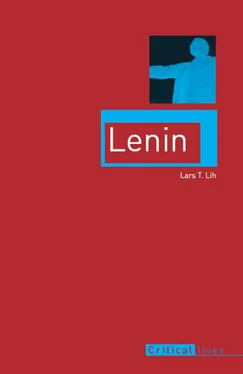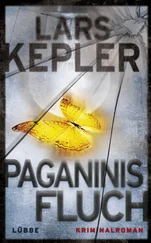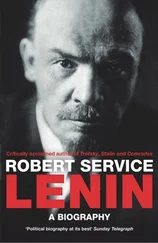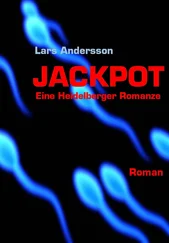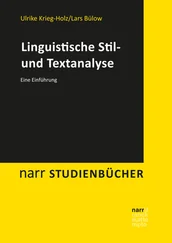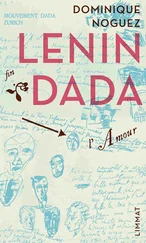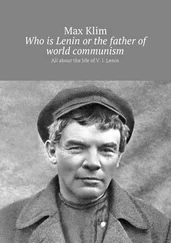Lars Lih - Lenin
Здесь есть возможность читать онлайн «Lars Lih - Lenin» весь текст электронной книги совершенно бесплатно (целиком полную версию без сокращений). В некоторых случаях можно слушать аудио, скачать через торрент в формате fb2 и присутствует краткое содержание. Город: London, Год выпуска: 2012, ISBN: 2012, Издательство: Reaktion Books, Жанр: Биографии и Мемуары, История, на английском языке. Описание произведения, (предисловие) а так же отзывы посетителей доступны на портале библиотеки ЛибКат.
- Название:Lenin
- Автор:
- Издательство:Reaktion Books
- Жанр:
- Год:2012
- Город:London
- ISBN:9781780230030
- Рейтинг книги:3 / 5. Голосов: 1
-
Избранное:Добавить в избранное
- Отзывы:
-
Ваша оценка:
- 60
- 1
- 2
- 3
- 4
- 5
Lenin: краткое содержание, описание и аннотация
Предлагаем к чтению аннотацию, описание, краткое содержание или предисловие (зависит от того, что написал сам автор книги «Lenin»). Если вы не нашли необходимую информацию о книге — напишите в комментариях, мы постараемся отыскать её.
Lenin — читать онлайн бесплатно полную книгу (весь текст) целиком
Ниже представлен текст книги, разбитый по страницам. Система сохранения места последней прочитанной страницы, позволяет с удобством читать онлайн бесплатно книгу «Lenin», без необходимости каждый раз заново искать на чём Вы остановились. Поставьте закладку, и сможете в любой момент перейти на страницу, на которой закончили чтение.
Интервал:
Закладка:
In his advocacy of a particularly ambitious thread connecting underground and workers – a national party newspaper – Lenin insisted on the existence of this worker milieu. True (he admitted) producing and distributing a newspaper of national scope is a difficult task – much more difficult than the tasks taken up by the older Russian underground, which did not even dream about mass distribution of a newspaper. But, continued Lenin, the target audience today makes the task much more manageable: industrial districts where workers make up almost the entire population, so that ‘the worker is factually master of the situation with hundreds of ways to outwit the vigilance of the police’. 24(Note that the sceptical ‘worry about workers’ so often ascribed to Lenin would have radically undercut all his arguments about the viability of a konspiratsiia underground.)
The plausibility of the underground threads strategy also required the validity of another optimistic assumption: a steady supply of people both heroic enough to risk career, health, freedom and even life for the cause, and self-disciplined enough to learn the necessary skills of konspiratsiia and to act in strict accordance with them – not always the most likely combination of qualities. Someone who combined both these qualities was the ideal ‘professional revolutionary’ – a functional necessity of an underground specifically of the konspiratsiia type. The conspiratorial revolutionary of the earlier populist underground was meant to replace a mass SPD-like party, deemed impossible under Russian conditions. In contrast, the professional revolutionary of the konspiratsiia underground was supposed to make something resembling a mass SPD-like party possible, even under Russian conditions.
The term ‘professional revolutionary’ in this meaning was coined by Lenin himself in What Is to Be Done? (1902) and then quickly adopted by the entire socialist underground. Yet Lenin’s own relation to this term is rather curious. The image of the professional revolutionary has two aspects: the poetry of daring and self-sacrifice vs. the prose of competence and self-discipline. At least in What Is to Be Done? , Lenin was much more interested in the prosaic side. The romantic image goes back to Rakhmetov, the ascetic revolutionary saint pictured in Nikolai Chernyshevsky’s novel of 1863, What Is to Be Done? . Lenin was a great admirer of Chernyshevsky, and his use of this title for his book on party organization was not a coincidence. But the underground certainly did not need Lenin to see themselves as Rakhmetovs. One of Lenin’s most vociferous opponents, Aleksandr Martynov, later recalled his own hero-worship of Rakhmetov, whom he imitated when a schoolboy by slowly crushing cigarettes on his own hand. 25
While in exile in Siberia – no doubt brooding on the damage done to the Petersburg Union of Struggle by the police – Lenin began to insist that underground praktiki needed to learn their own trade properly and thoroughly. He listed in very specific detail the functions needed to operate a konspiratsiia underground: agitation, distribution of leaflets and other illegal literature, organizers of worker study circles, correspondents reporting on worker grievances, security against government spies, setting up konspirativnyi apartments for secret meetings, transmitting instructions, collecting for funds and so on. He then argued that ‘the smaller and more specific the job undertaken by the individual person or individual group, the greater will be the chance that they will think things out, do the job properly and guarantee it best against failure [and at the same time] the harder it will be for the police and gendarmes to keep track of the revolutionaries.’ True, this kind of work may seem ‘inconspicuous, monotonous… a grim and rigid routine’. 26To be so prosaic required a special kind of heroism.
The chapter of Lenin’s What Is to Be Done? in which he introduced the term revoliutsioner po professii was devoted to pushing this same theme. A translation of this term that brings out Lenin’s underlying metaphor is ‘revolutionary by trade’, since the word professiia at the time meant primarily the trade of a skilled worker (a ‘trade union’ was a professionalnyi soiuz ). Lenin’s coinage was thus meant to evoke the image of a specialized and skilled worker in an efficient organization. The image that emerges from Lenin’s unsystematic use of the metaphor is the designedly prosaic one of a praktik honing his skills in his chosen trade.
Lenin’s coinage rapidly became an indispensable part of the vocabulary of the entire underground, partly because the ‘revolutionary by trade’ was a functional necessity of any underground of the konspiratsiia type. But the prosaic ‘revolutionary by trade’ was also the romantic and daring ‘professional revolutionary’. A few years after the publication of What Is to Be Done? a leader of the Socialist Revolutionary party, Victor Chernov, described the professional revolutionary as ‘a roving apostle of socialism, a knight who punishes evil-doers… his life-style is konspiratsiia , his sport is a contest with the police in cleverness and elusiveness’. He glories in his escapes from prison. 27Thus for the underground as a whole, the professional revolutionary gains authority because he is tough enough to be arrested and to escape. For Lenin in What Is to Be Done? the revolutionary by trade gains authority because he is smart enough not to get arrested in the first place.
Yet Lenin would not be Lenin if his insistence on the professional qualifications of the underground praktiki were not closely tied to his heroic scenario of inspiring leadership. In What Is to Be Done? professional training is a vital but not the only trait of the ideal underground activist. Following the SPD example, Lenin’s ideal praktik will rise from worker ranks. (The idea that Lenin restricted the status of ‘revolutionary by trade’ to intellectuals has no factual basis and is incompatible with his entire outlook.) Such a praktik will acquire broad horizons by working in all parts of the country. He will acquire in this way ‘a knowledge of the worker milieu plus a freshness of socialist conviction, combined with a full apprenticeship in his trade’, that is, the trade of underground activity. Given such trained agitators, propagandists and organizers from worker ranks, ‘no political police in the world will be able to cope with these detachments’ of the revolutionary army, since these activists will combine boundless devotion to the revolution with the ability to inspire ‘the boundless confidence of the broadest worker mass’. 28Such were Lenin’s boundless promises to the aspiring praktiki .
The fact that Lenin became (as one hostile Menshevik leader put it in 1904) ‘the idol of the praktiki ’ is therefore not hard to explain. 29On the one hand Lenin’s interest in the nuts-and-bolts problems of the konspiratsiia underground showed an appreciation of their difficulties that was rare among the intellectual leaders of the party. On the other his heroic scenario provided the activists with a romantic self-image of leaders who were capable of inspiring boundless confidence. In 1904 both supporters and opponents concurred in their view of Lenin as the chosen voice of the praktiki . In 1905 Alexander Potresov – a former colleague of Lenin, but by this time a determined foe – argued that he owed his popularity to the uncanny accuracy with which he embodied the grandiose and pathetically unrealistic self-image of the underground activists. 30Much later, in 1920, Stalin praised Lenin’s early organizational writings because they ‘completely corresponded to Russian realities and generalized in masterly fashion the organizational experience of the best praktiki ’ (among whom he numbered himself). 31
Читать дальшеИнтервал:
Закладка:
Похожие книги на «Lenin»
Представляем Вашему вниманию похожие книги на «Lenin» списком для выбора. Мы отобрали схожую по названию и смыслу литературу в надежде предоставить читателям больше вариантов отыскать новые, интересные, ещё непрочитанные произведения.
Обсуждение, отзывы о книге «Lenin» и просто собственные мнения читателей. Оставьте ваши комментарии, напишите, что Вы думаете о произведении, его смысле или главных героях. Укажите что конкретно понравилось, а что нет, и почему Вы так считаете.
